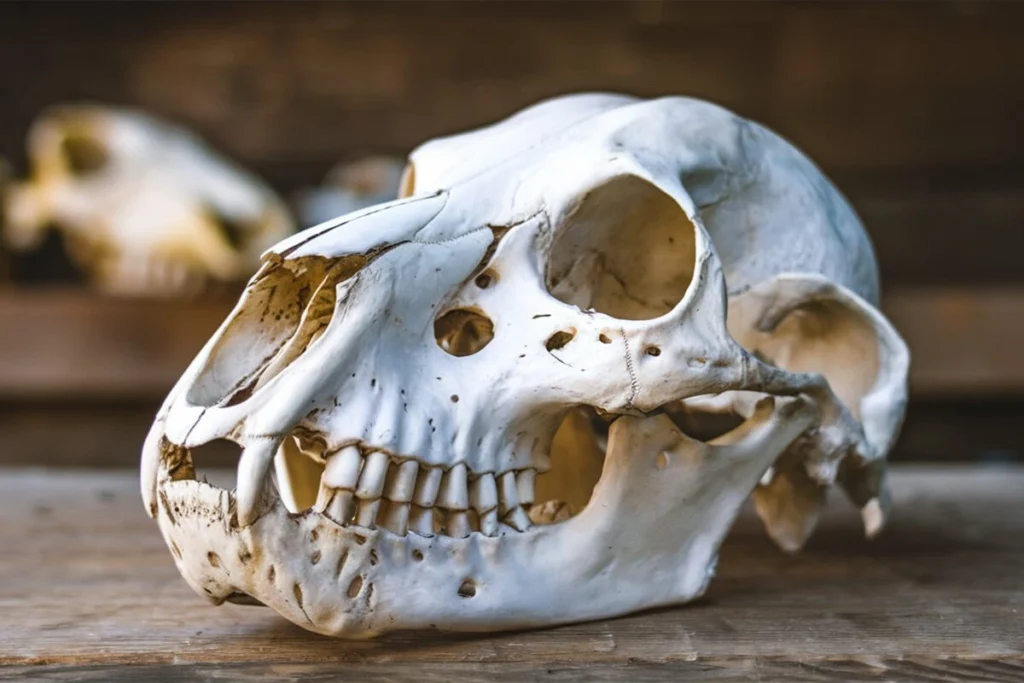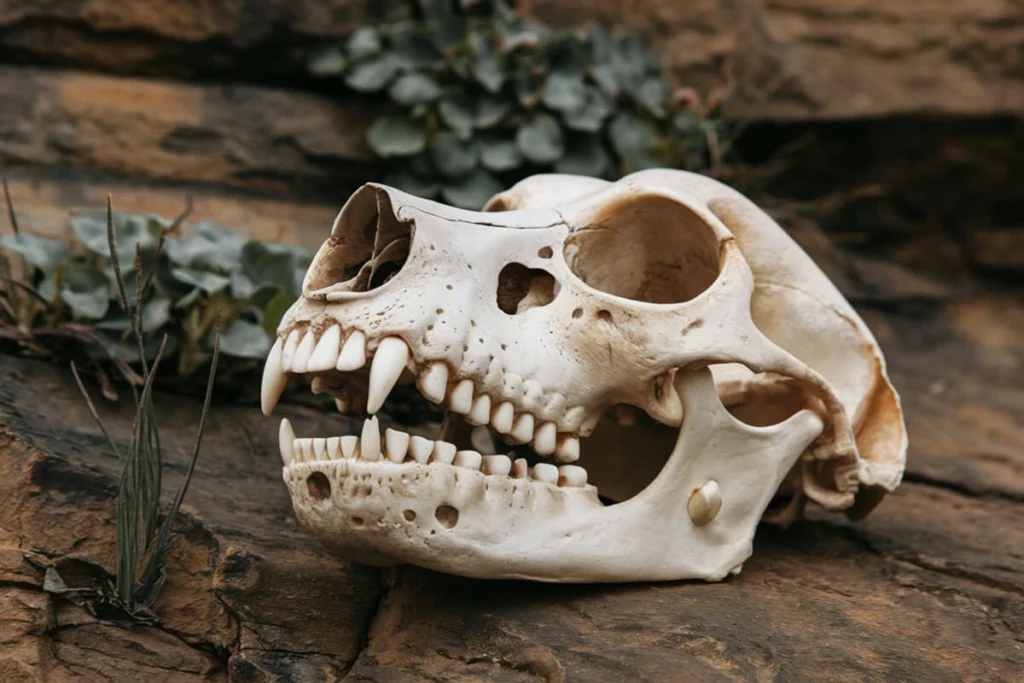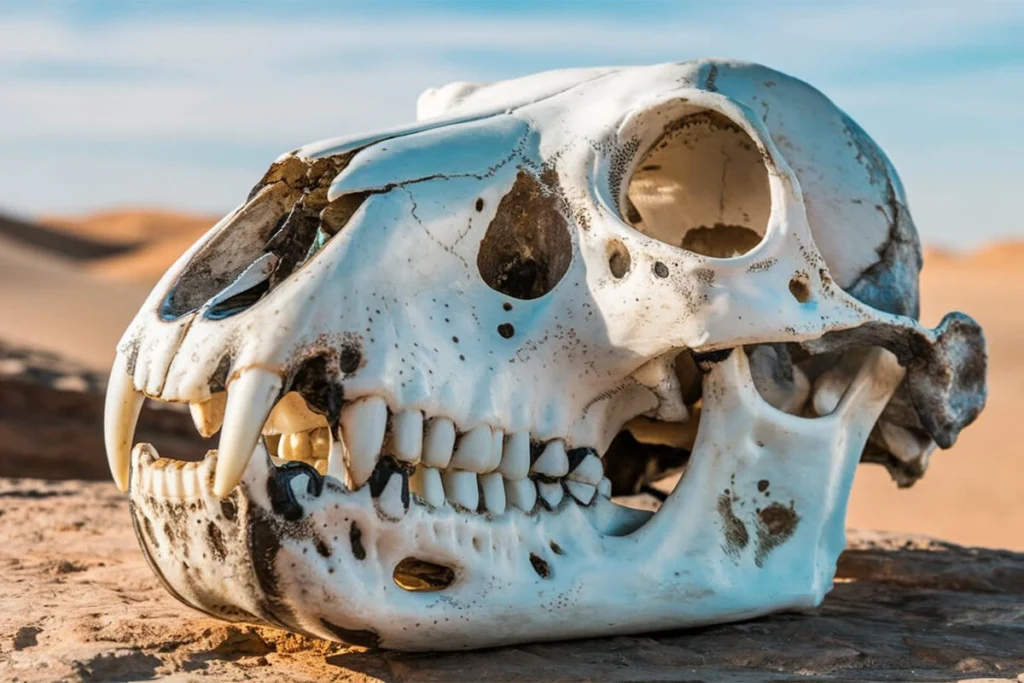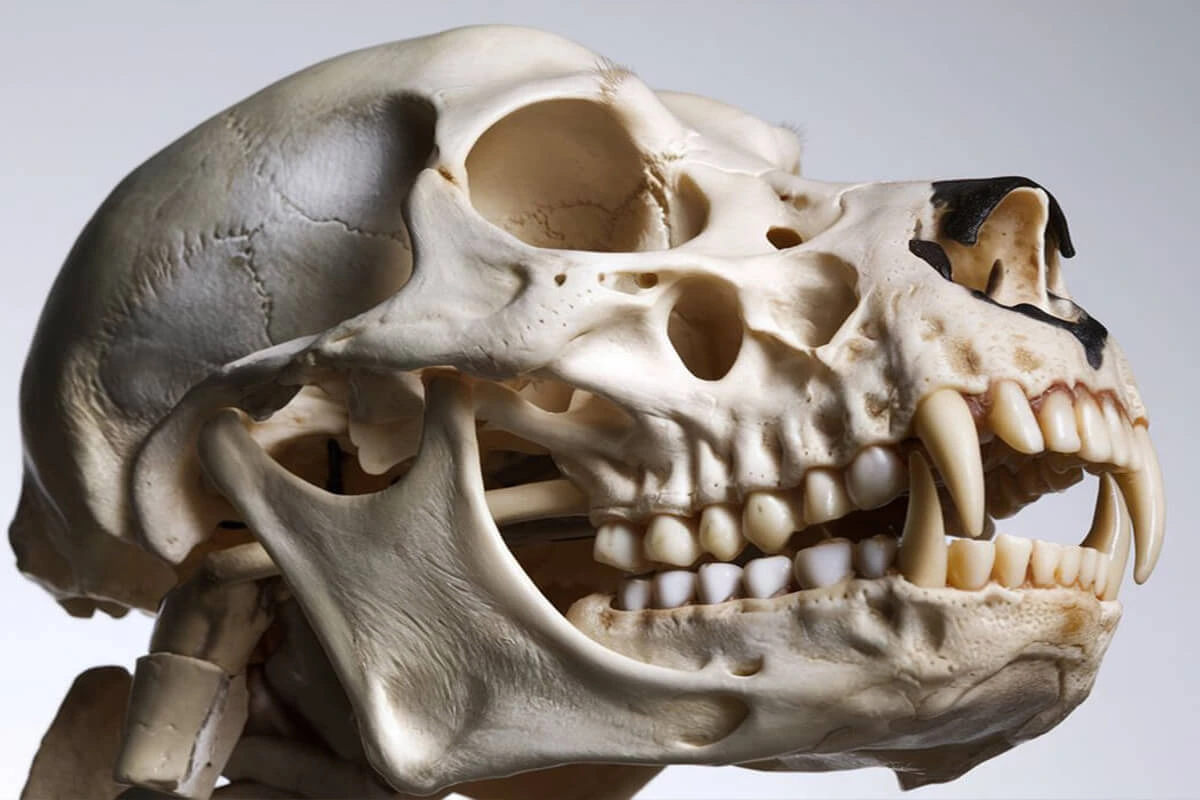Dog skull anatomy is much more than a topic of academic interest—it provides valuable insights into a dog’s breed, behavior, and health. Each skull shape and structure tells a rich story of evolution, adaptation, and functionality. Whether you are a dog owner, breeder, or just someone who loves dogs, understanding how their skulls are built can deepen your appreciation for the incredible diversity among breeds.
The wide variety of skull shapes in dogs reflects their unique roles throughout history. Some breeds have long, narrow skulls designed for speed and sharp vision, while others have short, compact skulls built for strength and close companionship. These variations are not only visually striking but also demonstrate how anatomy influences a dog’s daily life, health, and behavior.
In this post, we will explore five incredible facts about dog skull anatomy. You’ll learn why skull variations matter, how evolution shaped these fascinating features, and what they mean for your dog’s overall well-being. Let’s dive into the world of canine skulls and uncover what makes each one so unique!
The Unique Structure of a Dog’s Skull
The Anatomy of a Dog Skull
The dog skull is a remarkable piece of evolutionary design, composed of multiple bones that work together to protect the brain, support sensory organs, and provide attachment points for muscles. The skull consists of two main parts: the cranial region, which houses and protects the brain, and the facial region, which includes the jaw and structures involved in eating, breathing, and sensing the world.
The cranial region features a rounded dome that shields the brain from injury. Its structure is strong yet lightweight, balancing the need for protection with the necessity of mobility and efficiency. In contrast, the facial region is more variable between breeds, reflecting specialized adaptations for different functions, such as chewing, smelling, or even communicating.

Cranial Bones Explained
The cranial bones in a dog’s skull serve as the foundation of its structure, connecting tightly to create a solid protective barrier around the brain. Some of the key cranial bones include:
- Frontal Bone: This bone forms the forehead and contributes to the shape of the eye sockets. It provides a robust structure for muscle attachment and shields the frontal lobe of the brain.
- Parietal Bones: Located on the top and sides of the skull, these bones contribute to the dome shape of the cranial cavity and play a key role in protecting the brain’s parietal lobes.
- Occipital Bone: Found at the back of the skull, this bone features an opening called the foramen magnum, through which the spinal cord connects to the brain. It also provides attachment points for muscles that control head and neck movement.
- Temporal Bones: These bones house the structures of the inner and middle ear, crucial for a dog’s sense of hearing and balance.
Together, these bones form a durable cranial structure that supports the dog’s survival by safeguarding its most vital organ.
Dog Skull Structure and Its Functions
The design of the dog’s skull goes beyond simple protection. Its structure influences a wide range of functions critical to a dog’s survival and behavior. For example:
- Protecting the Brain: The robust cranial bones shield the brain from impact and injury while also allowing for openings like the foramen magnum and optic canals for nerve connections.
- Supporting Sensory Organs: The placement of the eye sockets, nasal cavity, and ear canals within the skull enables dogs to excel in vision, smell, and hearing—three senses they rely on heavily.
- Facilitating Muscle Attachment: The ridges and crests on the skull, such as the sagittal crest in certain breeds, provide surfaces for muscle attachment. These muscles help with chewing, barking, and head movement.
- Shaping the Face and Jaw: The facial structure determines how a dog interacts with its environment. Brachycephalic breeds, for instance, have flat faces that affect breathing and eating, while dolichocephalic breeds have elongated snouts designed for superior scent tracking.
The anatomy of a dog skull is a testament to the intricate balance of form and function, reflecting millions of years of evolution and adaptation. Understanding these details not only highlights the beauty of canine biology but also provides insights into their health, behavior, and needs.
Variations in Dog Skull Shapes by Breed
types of Dog Skulls
Dog skulls come in three primary shapes, each reflecting unique evolutionary adaptations that suit different lifestyles, abilities, and functions. These types are:
- Dolichocephalic (Long Skull):
Dogs with dolichocephalic skulls have long, narrow heads and elongated snouts. Breeds like Greyhounds, Afghan Hounds, and Borzois fall into this category. These skulls are designed for exceptional vision and speed, making them ideal for sighthounds that rely on keen eyesight and rapid sprinting to chase prey. The elongated nasal passage also enhances their sense of smell, though not as prominently as in other skull types. - Mesocephalic (Moderate Skull):
This is the most common skull type, featuring balanced proportions between the length and width of the head. Breeds like Labrador Retrievers, German Shepherds, and Beagles have mesocephalic skulls. This shape offers versatility, allowing for a strong bite, excellent olfactory capabilities, and balanced sensory functions. Dogs with mesocephalic skulls are often well-suited for diverse roles, from hunting to companionship. - Brachycephalic (Short Skull):
Brachycephalic dogs have broad, rounded skulls with flat faces and short snouts. Breeds like Bulldogs, Pugs, and Boxers exhibit this skull type. While the compact shape gives these dogs an adorable, human-like appearance, it often comes at a cost. The short nasal passage can lead to breathing difficulties, and the compressed facial structure may cause dental misalignments. Despite these challenges, brachycephalic breeds are prized for their affectionate and companionable nature.
Breed-Specific Dog Skull Shapes
The shape of a dog’s skull varies significantly across breeds, reflecting their historical roles and physical needs.
- Sighthounds (Dolichocephalic): Breeds like Salukis and Whippets have long skulls designed for spotting and chasing prey over long distances. Their streamlined shape minimizes air resistance, aiding speed and agility.
- Retrievers and Working Dogs (Mesocephalic): Labrador Retrievers and Border Collies possess moderately shaped skulls that balance strength, sensory abilities, and endurance, making them excellent for retrieving, herding, and other tasks.
- Companion Breeds (Brachycephalic): Bulldogs and Shih Tzus have rounded, short skulls that enhance their expressive faces, a trait that endears them to humans as companions. However, their skull shape limits certain physical abilities, such as stamina for strenuous activities.
Breed-specific skull shapes often highlight a dog’s specialized role in history, whether as a hunter, herder, or loyal friend.
Impact of Skull Shape on Functionality
A dog’s skull shape significantly influences its physical abilities, sensory functions, and overall health.
- Breathing and Respiration:
Brachycephalic breeds face challenges due to their shortened nasal passages and compressed airways, often resulting in conditions like brachycephalic airway syndrome. In contrast, dolichocephalic breeds breathe more efficiently, benefiting from elongated nasal structures. - Olfactory Abilities:
Mesocephalic and dolichocephalic breeds excel in scent detection due to their well-developed nasal cavities. For example, Beagles and Bloodhounds, both mesocephalic, are renowned for their exceptional tracking skills. - Vision and Field of View:
Dolichocephalic dogs have a wider field of vision, enabling them to spot movement over long distances. Conversely, brachycephalic breeds have a narrower field of view but often display better depth perception due to the forward placement of their eyes. - Feeding and Chewing:
Skull shape impacts jaw strength and alignment. Dolichocephalic breeds typically have a scissor-like bite suited for gripping and tearing. Mesocephalic breeds balance biting strength with versatility, while brachycephalic breeds may struggle with dental issues due to misaligned or overcrowded teeth. - Health Implications:
Brachycephalic breeds are more prone to health issues like overheating, breathing difficulties, and eye problems due to their unique skull shape. Understanding these potential risks helps owners provide better care tailored to their dog’s needs.
By examining the connection between skull shape and functionality, we gain a deeper understanding of how physical traits influence a dog’s abilities, behaviors, and overall well-being. Each skull shape comes with its strengths and challenges, reflecting the incredible diversity within the canine world.
Evolutionary Traits in Dog Skull Anatomy
The Evolution of The Dog Skull
The evolution of dog skulls tells a fascinating story of adaptation, survival, and domestication. Millions of years ago, wild canids, such as wolves and foxes, relied on their skull shapes for hunting, defense, and survival in the wild. Over time, as humans domesticated dogs, their skulls began to reflect new needs and roles.

During domestication, selective breeding became a powerful force that shaped the diversity of skull types we see today. Ancient humans bred dogs for specific tasks, such as herding, guarding, and companionship. These breeding practices influenced not just behavior and temperament but also physical traits, including skull shape. For example, dogs bred for tracking prey developed elongated snouts to enhance their sense of smell, while those bred for fighting or guarding gained stronger, broader skulls to support powerful jaws.
The evolutionary journey of dog skulls also shows how they adapted to different climates, diets, and lifestyles. For instance, changes in diet influenced jaw strength and dental structure, while the demands of domestication introduced skull shapes that favored human interaction over survival in the wild.
Wild vs. Domestic Canines
The differences between the skulls of wild canines, like wolves, and domestic dogs reveal the impact of domestication.
- Shape and Structure:
Wolves have longer, narrower skulls that are optimized for hunting large prey in the wild. Their strong jaw muscles and sharp teeth reflect their need to crush bones and tear through tough meat. In contrast, domestic dogs exhibit a wider range of skull shapes. Brachycephalic breeds, for example, have shorter skulls with smaller jaws, which are better suited for softer diets and companionship rather than hunting. - Braincase Size:
The braincases of wild canines tend to be larger relative to their body size compared to domestic dogs. This difference likely stems from the need for heightened sensory awareness and survival instincts in the wild. Domestic dogs, on the other hand, rely more on human guidance and have developed skulls that accommodate behaviors suited for living alongside people. - Dental Adaptations:
Wolves have more uniform and functional teeth, designed for gripping, tearing, and crushing. Many domestic dogs, due to their varied skull shapes, experience dental misalignments, such as overcrowding or underbites, especially in brachycephalic breeds.
The divergence between wild and domestic canine skulls highlights how environmental pressures and human influence have shaped their physical evolution.
Adaptive Morphology
Adaptive morphology, or the way a dog’s skull shape adapts to its environment and role, plays a key role in understanding the diversity among breeds. Every skull variation exists for a reason, whether for survival, sensory enhancement, or human preferences during breeding.
- Environmental Adaptations:
Wild canines living in colder climates, like Arctic wolves, developed broader skulls and shorter snouts to minimize heat loss, while those in warmer regions, like jackals, retained elongated skulls to aid with cooling. These adaptations highlight how the environment shaped their physical traits over time. - Functional Changes:
Skull morphology directly influences a dog’s abilities. For instance, sighthounds like Greyhounds have long, narrow skulls designed for speed and precise vision, while terriers possess more compact skulls with strong jaws, allowing them to dig and capture burrowing prey effectively. - Domestication and Artificial Selection:
Humans have played a pivotal role in shaping skull morphology in domestic dogs. Breeding for aesthetic traits, like the flattened face of Bulldogs or the domed skull of Cavalier King Charles Spaniels, introduced significant changes to skull structure. While these traits may serve no functional purpose, they often align with human preferences for specific appearances or behaviors. - Dietary Influence:
Shifts in diet also impacted skull evolution. Dogs that transitioned from hunting in the wild to consuming human-provided food experienced changes in jaw strength and dental patterns. This adaptation reduced the need for strong jaw muscles and sharp teeth in many domestic breeds.
Adaptive morphology showcases the incredible versatility of dogs and their ability to thrive in diverse roles and environments. By exploring these evolutionary changes, we gain a deeper appreciation for how nature and human influence have shaped the skulls of our canine companions. This adaptability not only reflects their physical evolution but also underscores their unique bond with humans throughout history.
How Skull Anatomy Affects Dog Behavior and Health
Behavioral Traits Linked to Skull Anatomy
A dog’s skull anatomy plays a significant role in shaping its behavior and abilities. The structure of the skull influences brain size, sensory capabilities, and even the way a dog interacts with its environment.
- Braincase Size and Problem-Solving Skills:
Dogs with larger braincases, often seen in mesocephalic breeds like Border Collies or Labrador Retrievers, typically display enhanced cognitive abilities. These dogs excel at problem-solving, obedience training, and performing complex tasks. On the other hand, smaller braincases, often present in brachycephalic breeds like Pugs, may limit certain cognitive functions but do not diminish their capacity for affection and bonding. - Sensory Adaptations:
Skull shape affects the placement of sensory organs, which influences behavior. Dolichocephalic breeds, such as Afghan Hounds, have a wider field of vision, making them highly adept at spotting movement over long distances. These traits align with their natural instinct to chase prey. Conversely, brachycephalic breeds, like Bulldogs, rely more on scent and hearing due to their forward-facing eyes, which reduce peripheral vision. - Jaw Shape and Behavioral Tendencies:
The structure of a dog’s jaw impacts its natural behaviors. Breeds with strong, square jaws, like terriers, tend to exhibit a strong prey drive and a natural inclination for gripping or digging. Dogs with longer snouts, like retrievers, often show gentler mouth control, which is ideal for carrying objects without damaging them.
Understanding the link between skull anatomy and behavior allows dog owners to better meet their pet’s mental and physical needs, creating a more enriching environment tailored to their breed’s instincts.
Health Issues in Brachycephalic Breeds
Brachycephalic breeds, known for their short and rounded skulls, face unique health challenges due to their anatomy. While their distinct appearance appeals to many, it often comes at a cost to their overall well-being.
- Breathing Difficulties:
The shortened snouts of brachycephalic breeds like Pugs and French Bulldogs can lead to brachycephalic airway syndrome (BAS). This condition causes narrowed airways, elongated soft palates, and restricted airflow, making it difficult for these dogs to breathe, especially during exercise or in hot weather. - Dental Problems:
The compact skull structure in these breeds often results in overcrowded teeth and misaligned jaws. This can cause discomfort, difficulty chewing, and an increased risk of dental diseases, such as gum infections and tooth decay. - Overheating Risks:
Due to their restricted airways, brachycephalic breeds struggle to regulate their body temperature through panting, making them more prone to heatstroke. Owners must monitor their activity levels and provide a cool environment to prevent overheating. - Eye Disorders:
The shallow eye sockets in brachycephalic dogs increase their risk of eye issues, such as corneal ulcers and proptosis (displacement of the eyeball). Proper care and regular check-ups are essential to manage these risks.
Despite these challenges, brachycephalic breeds bring immense joy to their owners. By understanding their unique needs, dog owners can take steps to provide better care and improve their pet’s quality of life.
Importance of Understanding Skull Morphology in Vet Care
Veterinarians rely on their knowledge of skull morphology to diagnose and treat various conditions in dogs. Skull structure affects more than just appearance; it influences a dog’s health, sensory functions, and physical abilities.
- Accurate Diagnoses:
A veterinarian who understands skull morphology can identify breed-specific health risks more effectively. For instance, knowing that brachycephalic breeds are prone to breathing issues helps vets quickly assess symptoms like snoring, labored breathing, or fainting episodes. - Tailored Treatment Plans:
Treatments for health issues often depend on skull anatomy. For example, vets performing surgery on a brachycephalic dog must account for its narrowed airways and compact facial structure. Similarly, dental procedures may vary based on jaw alignment and tooth crowding in different breeds. - Preventive Care Recommendations:
Veterinarians educate dog owners about the potential risks associated with their pet’s skull shape. They may recommend lifestyle changes, such as controlled exercise for brachycephalic dogs or dental hygiene routines for breeds prone to tooth crowding. This proactive approach helps reduce the likelihood of serious health problems. - Behavioral Insights:
Skull morphology not only influences physical traits but also behavioral tendencies. Vets can use this information to advise owners on how to address breed-specific behaviors, such as excessive barking in small brachycephalic dogs or the high prey drive in dolichocephalic breeds.
Understanding skull morphology allows veterinarians to provide more comprehensive care, ensuring that dogs of all breeds receive the attention and support they need to lead healthy, happy lives. By combining this knowledge with regular check-ups and owner education, vets play a crucial role in promoting the well-being of every canine patient.
Fascinating Facts About Canine Cranial Bones
Skull Bones Count and Structure
A dog’s skull is made up of around 50 bones that fuse together as the dog matures. These bones are divided into two main regions: the cranial region and the facial region. The cranial region, which includes bones like the frontal, parietal, temporal, and occipital, protects the brain and houses sensory organs. The facial region, on the other hand, consists of the jawbones, nasal bones, and zygomatic bones, all of which play key roles in breathing, eating, and sensory perception.

Each bone in the skull serves a unique purpose, whether it’s providing protection, enabling movement, or serving as an attachment site for muscles. The skull also features sutures—fibrous joints that connect the bones. These sutures offer flexibility during a dog’s early stages of life, ensuring the skull can adapt and grow as the dog develops.
Skull Growth and Development in Puppies
When puppies are born, their skulls are soft and flexible, designed to protect the brain while accommodating growth. At birth, the skull bones are separated and connected by sutures, allowing the skull to flex during delivery through the birth canal. As the puppy grows, these bones gradually fuse, forming a strong and solid structure that protects the brain and supports other functions.
The rate of skull growth differs between breeds. Larger breeds, such as Great Danes, often take longer to fully develop their skulls compared to smaller breeds like Chihuahuas. Nutrition also plays a significant role in proper skull development, as a balanced diet ensures the bones grow strong and form correctly during the puppy’s growth stages.
Fun Fact: Canine Sagittal Crest
The sagittal crest is a fascinating feature found on the top of some dogs’ skulls. It’s a bony ridge that runs along the skull and serves as an attachment point for powerful jaw muscles, such as the temporalis. This feature is especially prominent in breeds with strong bites, like German Shepherds and Rottweilers.
Interestingly, not all dogs have a noticeable sagittal crest. Smaller breeds or those with less pronounced jaw muscles, such as toy breeds, often lack this feature. In breeds that do have a sagittal crest, it not only enhances their ability to bite and chew but also contributes to the breed’s characteristic head shape. This unique anatomical trait showcases the adaptability of canine skulls to various dietary and lifestyle needs over time.
Conclusion
Understanding dog skull anatomy offers more than just knowledge—it deepens your connection to these incredible animals. The shape and structure of a dog’s skull reflect its evolutionary journey, unique role, and specific needs. From their behavior to their health, every aspect of a dog’s life ties back to the fascinating details of its anatomy.
By recognizing the differences between breeds, such as the elongated snouts of sighthounds or the compact skulls of brachycephalic dogs, you gain a better appreciation of how form meets function. This understanding helps dog owners and enthusiasts alike to provide the care and environment their dogs need to thrive.
Exploring the science of dog skulls not only highlights their beauty and diversity but also offers practical benefits. It equips you to address potential health concerns, understand behavioral traits, and celebrate the remarkable adaptations that make every breed unique.
The more you learn about dog skull anatomy, the more you realize how much these structures reveal about the past, present, and future of our canine companions. Whether you own a dog or simply admire them, this knowledge enriches your perspective and helps you see dogs as the extraordinary creatures they truly are.
Discover More about Dogs and Breeds From Here
You Can find The Good Stuff For your Dog on PetMD Official
